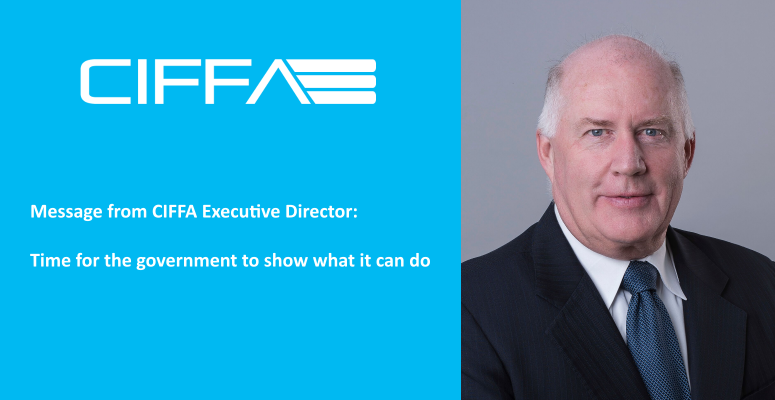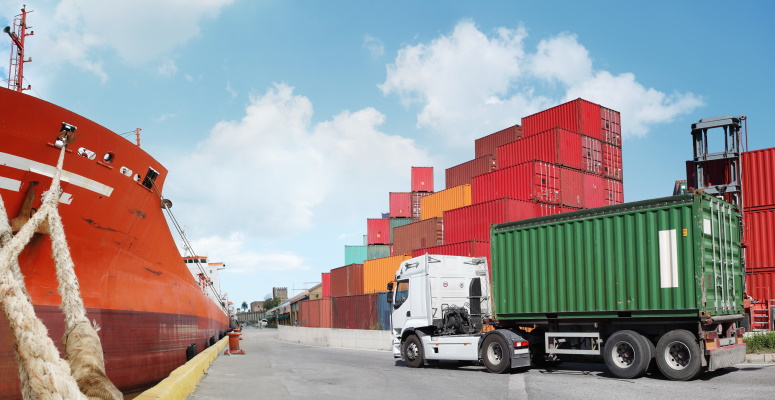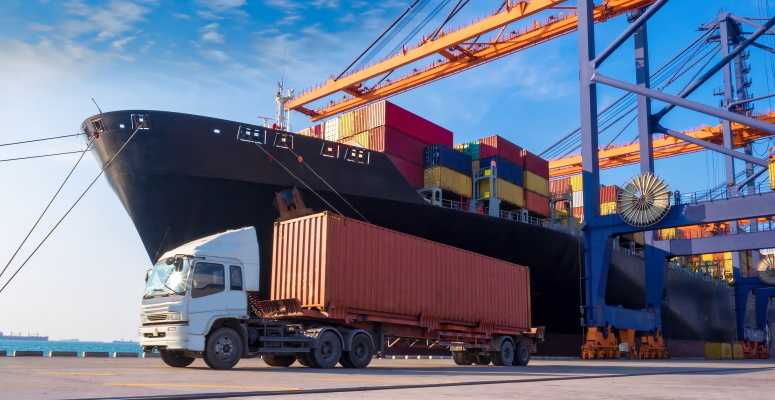
M&A Deep Dive into Digital Freight Brokers
By Nikhil Sathe • Logisyn Advisors, Managing Director
Digital freight companies are creating an enormous buzz in the market. These are tech and HR companies that happen to be logistics and transportation providers. 3PL is a labor play – the companies that drive superior unit economics also drive value and rapidly increase market share, while creating significant operational, sales, and procurement efficiencies in a “lights out” business model.
This sector of the industry has been innovative – evolving as solutions providers and problem solvers; they set out to drive costs out of the business and create efficiencies across the board. Digital freight companies have been focusing on improving their business models to better achieve quality margin management and a higher level of customer service.
Defining Digital Freight Matching
Digital freight matching exists to create connections between truckers and shippers with digital brokers acting as conduits in the process. Leveraging a full spectrum toolbox including AI (artificial intelligence), ML (machine learning), algorithms, and process re-engineering, brokers efficiently convert tendered loads into revenue loads. Digital brokers differentiate in their carrier procurement to maximize loads per carrier rep and leverage an effective tech stack and carrier database. The cutting-edge technology seamlessly integrates the customer and carrier load tendering processes into their TMS or operating system. Due to these factors, digital freight demonstrates significantly higher output per capita in revenue loads and other unit economics.
Carrier procurement is a daunting task for brokers and digital freight companies. Utilizing machine learning, innovation, and AI technology assigns a load to a carrier in the most competitive time frame. Since the market size is huge and the carrier market is deeply fragmented, such automated procurement spearheads volume growth without many touch points, maximizing load and operational efficiency.
Digitization of Freight: Trendy or Inevitable?
COVID-19 exacerbated freight digitization and hit the fast-forward button, putting automation front and center of corporate strategy. Many mid-sized freight and logistics companies embraced technology, data sharing, and remote operations. System intelligence is now an essential commodity. Digitization doesn’t replace customer service, but it augments and strengthens the service model. Looking inward, technology is a productivity toolbox to drive efficiency and superior unit economics. Outward-looking tech stacks create superior responsiveness, visibility, and a seamless process from distant freight to actual delivery.
In today’s market where carrier and broker fragmentations run too deep, most intermediaries are trying to create customer and carrier hooks for load tendering and competitive capacity sourcing. Digitization at a higher-level means automating repetitive processes, efficient carrier procurement, AI-influenced and binary decisions, driving unit economics, workflow efficiency, and higher conversion of revenue loads.
Understanding the Market and Growth Trajectory
For the past few years, significant VC and Private Capital have flown into Digital Freight Companies claiming superior technology stack, power to scale market share, and load volumes. Some of these companies have experienced exponential top-line growth. Many of them are unicorns with robust proforma valuations. As the level of outsourcing grows at more than 3-4 times GDP, the market presents a huge opportunity for building scale and size. Fragmented broker and carrier markets present a unique opportunity to scale and stack synergistic brokers.
Most 3PL’s are embracing technology in a significant way, especially in the wake of COVID. Digital freight companies’ focus is placed more heavily on data than loads, superior unit economics than mere execution, automation than multiple touch points, and seizing market share than quality margin management.
Digital Freight Matching Considerations
- Saves time and avoids friction
- Less paperwork, higher digital footprint
- Provides dynamic routing and optimization
- Lower prices than traditional brokers
- 24/7 access
- Increases efficiency
Digital Freight Brokers also have their own set of complexities and challenges in their business models, including:
- Their customer service and carrier on-boarding functionalities sometimes leave a lot to be desired.
- Digital Brokers can be very effective for commoditized freight like dry van or flat beds; however these companies often struggle in finding carriers in project freight, temp controlled, refrigerated, or fresh produce.
- Companies have been found less efficient in partial loads regarding competitive pricing/sourcing equipment.
- Shippers tend to engage digital brokers as price point intermediaries, leading to inconsistent service levels.
- There is a load-level relationship with carriers and shippers – it’s load-hauled and it’s done!
The industry needs Digital freight, and these brokers are using innovation to transform business models and achieve greater operational efficiency. Digital brokers today can find trucks quickly at very competitive rates. With over 800,000 motor trucking companies in the US (87% of these companies own less than 6 trucks), we believe these brokers are doing a great job in creating efficient carrier networks to service their customers.
As of now, this is still a single-use service, but digital freight brokers are understanding the need for better quality of carrier procurement. The industry has seen a recent trend of these companies investing in expanding their carrier relationships to strengthen sourcing capacity.
“Global Digital Freight Brokerage Market to Reach $10.9 Billion by 2027
Amid the COVID-19 crisis, the global market for Digital Freight Brokerage estimated at US$1.2 Billion in the year 2020, is projected to reach a revised size of US$10.9 Billion by 2027, growing at a CAGR of 37.3% over the analysis period 2020-2027. Roadway, one of the segments analyzed in the report, is projected to record a 38% CAGR and reach US$3.6 Billion by the end of the analysis period.
After an early analysis of the business implications of the pandemic and its induced economic crisis, growth in the Seaway segment is readjusted to a revised 42.1% CAGR for the next 7-year period.
The U.S. Market is Estimated at $341 Million, While China is Forecasted to Grow at 43.9% CAGR
In 2020, the Digital Freight Brokerage market in the U.S. was estimated at US$341 Million. China, the world`s second-largest economy, is forecasted to reach a projected market size of US$2.3 Billion by the year 2027 trailing a CAGR of 43.9% over the analysis period 2020 to 2027. Among the other noteworthy geographic markets are Japan and Canada, each forecasted to grow at 31.3% and 35.2% respectively over the 2020-2027 period. Within Europe, Germany is forecasted to grow at approximately 33.4% CAGR.”
— Global Industry Analysts, Inc, April 2021, “Digital Freight Brokerage – Global Market Trajectory & Analytics”, Research & Markets
Key Factors & Growth Drivers
- There is a domino effect happening in how tech stacks are influencing the transportation & logistics industry – even recent transportation conferences are now majorly comprised of technology companies.
- Tech entrepreneurs are bringing effective solutions to this vast addressable market – developing innovative mouse traps to solve problems like capacity sourcing, back office, and document management.
- The large number of tech start ups has influenced growth within the digital freight market and this trend is expected to continue with great momentum.
- Brokers have seen a significant impact from technology in improving their sales and procurement programs driving freight unit economics significantly.
- Web and mobile clients have a growing influence on carriers to match their equipment and improve online interaction, which supports centralizing logistics processes and maximizing operational / P&L efficiencies.
- Digital Brokers have brought in real time versions of value-added services including mobile platforms, track & trace, claims and document management, and post delivery activities. Making life seamless for shippers and carriers, these services are a huge arbitrage in saving precious labor costs and improving customer satisfaction and margin management.
- Lower, mid-market, and large brokers are also investing heavily in technology. Ironically, many of these large brokers hire more systems engineers than brokers to fast track their tech development.
- There is a surge of demand for digital freight brokerage platforms given market volatility and uncertainty from institutional shippers, large transportation carriers. These digital brokers are a “go to” solution to improve agility, reliability and performance of supply chains, spearheading growth in this segment.
- There is exponential growth in advanced technology providers in the transportation and logistics sector for sales, operations, procurement, and back office that use AI, ML or other toolboxes.
- Significant capital attracted to the digital freight market from venture and private capital has significantly improved their market profile and outlook.
“Analysts are predicting to expand at a CAGR of 33% during the forecast period from 2020 to 2030. The extensive use of smartphones and mobile applications for efficient shipping and logistics operations fuels the growth of the digital freight brokerage market. Solutions in the digital freight brokerage market include mobile applications that enable shippers and carriers to interact directly and match their services for transportation and logistics.
Significant capital investments leading to increasing use of technology are favorable to the growth of the digital freight brokerage market. This is attracting a number of small-to-large scale digital freight brokerage companies entering the fray.
The inclination of established transportation management companies to partner with digital freight brokers is creating new frontiers in the digital freight brokerage market. The announcement of the partnership of Uber Freight with Transplace and Cloud Logistics by E2open to provide added value, flexibility, and control of shipping logistics is a case in point. The move is expected to offer shippers transparency, and an exceptional degree of ease in the current fast-moving market.”
— Transparency Market Research, May 2022, “Digital Freight Brokerage Market to Reach US$ 26 Bn by 2030”, Globe Newswire
Digital Freight Competitor Highlights
- Arrive Logistics
- Book Your Cargo (BYC)
- Cargo Chief
- Cargomatic, Inc.
- Convoy
- Coyote Logistics
- Edge Logistics
- Echo Global Logistics, Inc.
- B. Hunt Transport Services, Inc.
- Loadexpress
- Parade
- Surge Transportation
- Transfix
- Transplace
- Torch Logistics
- Uber Freight
M&A Perspective on Digital Freight Brokers
The past few years have seen exponential VC and private capital attracted to this segment given the significant market opportunity. Many of these companies are characterized by high load and top-line revenue growth, superior technology stack, and robust proforma valuations. Valuations are influenced by the financing environment and capital structure is often influenced by the capital markets. We have also seen the transportation technology sector booming with new solutions, platforms, and architecture.
We often get asked about the difference between a logistics company and a tech company. The difference primarily lies in its operating model. A common question is if logistics companies would trade X revenue rather than X free cash flow. Our response is that it should be deal specific, which mainly depends on the target’s growth story and buyer’s investment profile and orientation. Superior technology stack in and of itself doesn’t warrant the company to trade at X revenue, as we believe the technology stack should contribute to superior and exemplary P&L performance.
The digital freight market is estimated to be larger even than recent reports have captured and continues to grow at an exponential rate. Based on our indications and trendlines, The U.S. segment of the market could surpass $30 billion over the next decade. During the pandemic time between March 2020 and early 2022, we saw growing digitization in the mid-market segment, and these companies are now trying to close the technology gap between tech-forward and tech-enabled brokers.
“Over the past few years, large digital freight brokerages (DFBs) backed by venture capital have emerged in the global transportation and logistics industry. Although in North America startups like Convoy, Uber Freight and Transfix dominate media coverage of DFBs, incumbents C.H. Robinson, J.B. Hunt, and others have made large investments in technology to digitize their brokerage operations.
It’s not just in North America – Berlin-based company, Sennder, raised a $70 million Series C in July 2019 that valued the digital brokerage at $300 million, post-money. BlackBuck, a DFB from Bengaluru, India, raised a $150 million Series D in March that valued the startup at $862 million, post-money. Finally, Beijing’s Manbang Group, a DFB created in 2017 by merging two other Chinese firms, is seeking a $1 billion investment that would value the company at $10 billion.
North American valuations have swelled and many of these DFB’s are now unicorns, such as Loadsmart, Convoy, Cargomatic, etc. Uber Freight, a division of publicly traded Uber Technologies, is valued by the market at a multiple of its gross revenue, not its earnings before interest, tax, depreciation and amortization (EBITDA).
Moreover, there’s a disconnect between the way that private markets value DFBs and the way that public markets value third-party logistics providers (3PLs) like Echo Global Logistics and C.H. Robinson…
…the truckload industry will grow along with nominal GDP and that freight brokerage has an approximate ceiling of 35 percent market penetration in 10 years, up from about 18 percent today. We also assume that DFBs will account for 50 percent of all freight brokerage in 10 years, up from about 1 percent today. Finally – to create a fair but realistic scenario where most factors work in DFBs’ favor – the assumption is made that digital freight brokers are able to achieve an 8 percent gross margin in 10 years, up from about 1 percent today.”
— Freightwaves, August 2019, “How much are digital freight brokerages really worth?”
Digital Freight Valuation
We estimate the size of the trucking industry is over $800 Billion, when using the total addressable market by digital brokerages. The current brokerage market is estimated to be north of $75 Billion. The trucking industry and brokers are deeply fragmented, making a strong case for scaling and stacking synergistic assets to maximize enterprise value.
Inherent in the valuation model are always underlying assumptions. Valuation is done based on Scenario Planning which assumes a financial model that includes a present-day number of future earnings – probability of earnings given the external factors and internal factors which sometimes are in your control and sometimes to the vagaries of the market.
The Valuation Dilemma
Some of these Digital Freight Brokers underinvest to maximize earnings, some invest heavily front end to spearhead growth, and others take a middle approach, starting with cutting earnings power and then speeding up the margin and EBITDA expansion. We think the latter option give these companies the best valuation potential.
Traditional buyers would value the target based on traditional valuation methods, and their financial models are typically based on X FCF. Most of these digital companies with solid proforma valuations are unicorns and would have challenges matching or exceeding actual valuation on exit. There is still no precedent for the exit valuations of these companies. In our view, exit valuations should be pressure tested with margin and profitability performance over the long term.
Digital Freight Companies, with their ability to spearhead high growth, their lean enterprise execution model, and their superior freight unit economics, would drive better-than-market valuations.
We are already watching some macroeconomic headwinds in the capital markets, and there seems to be a considerable slowdown in VC-backed investments in new ventures in 2022. Despite all uncertainties, we believe technology will continue to dominate the Freight Brokerage Market, and we are quite bullish about valuation expectations given strong and secular growth credentials in this high growth, fast paced, and dynamic market.
Logisyn’s Expertise in Digital Freight
Logisyn is an M&A advisor that caters specifically to companies in the logistics sector. The Logisyn team has deep domain expertise in taking digital freight companies to market and determining the most effective market map of synergistic buyers driving valuations and optimizing deal structure. Our customers include global freight forwarders, customs house brokers, domestic forwarders, trucking companies, logistics software providers, and many other companies across the industry. Our team leverages our deep relationships in the market and our broad database to help buyers find the “right” target for the “right“ value.
Nikhil Sathe • Managing Director
Nikhil Sathe has an extensive background in working with digital freight companies in North America to spearhead their growth strategy and maximize their enterprise value. Nikhil has successfully run strategic engagements for mid-size logistics companies as well as being known as a thought leader and domain expert in the 3PL and tech space. For more information, please email nikhil.sathe@logisyn.com.
Publication Sources
- Global Industry Analysts, Inc, April 2021, “Digital Freight Brokerage – Global Market Trajectory & Analytics”, Research & Markets,https://www.researchandmarkets.com/reports/5141197/digital-freight-brokerage-global-market
- Transparency Market Research, May 2022, “Digital Freight Brokerage Market to Reach US$ 26 Bn by 2030, TMR Report”, Globe Newswire,https://rss.globenewswire.com/fr/news-release/2022/05/05/2436980/0/en/Digital-Freight-Brokerage-Market-to-Reach-US-26-Bn-by-2030-TMR-Report.html
- Freightwaves, August 2019, “How much are digital freight brokerages really worth?”, Freightwaves,https://www.freightwaves.com/news/how-much-are-digital-freight-brokerages-really-worth
- Freightwaves Freightintel Research, August 2019, “What are Digital Freight Brokers Worth?”



